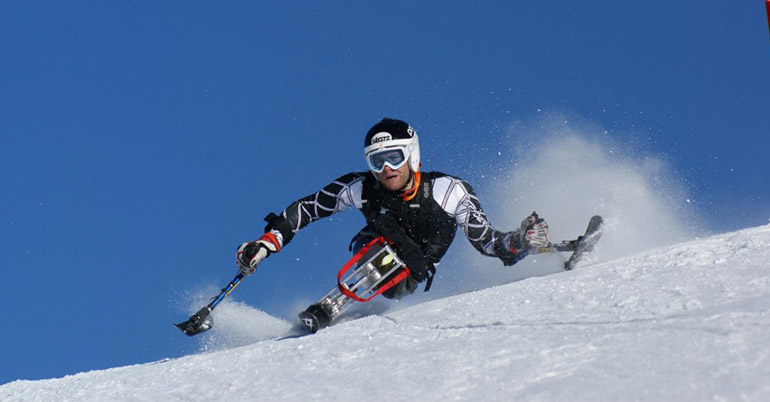Adaptive skiers lead by example
Many of us have had the experience of racing down a slope, only to be overtaken by an adaptive (partly disabled) skier. But it blows my mind to see someone visually impaired tackling a ski slope. I get that it’s physically possible but the mind over matter is inspiring and captures everything I love about skiing!
We recently talked to Kevin Jardine, High Performance Director of the US Paralympics Alpine National Team about his experiences with Sprongo and about his team. Kevin not only has one of the best ski jobs around, but is also one of the most experienced coaches in the world of snow sports. Sure, he loves Sprongo but he has one of the most inspiring jobs in ski coaching in the world. Over 25 years so far with many more to come!!
The US Paralympics Alpine National Team
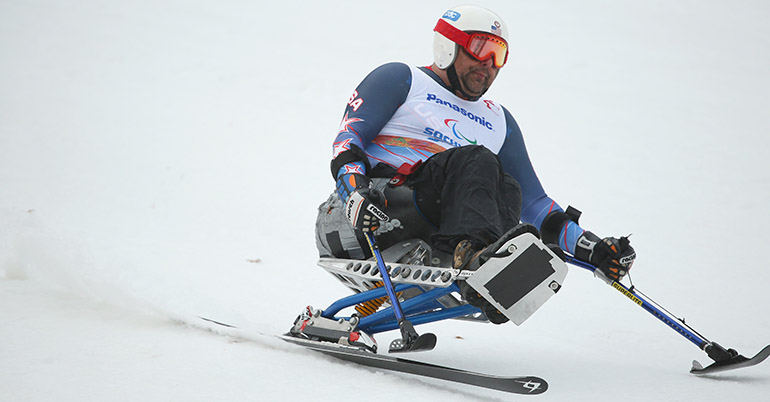
The US team is presently the only national team with athletes of both sexes in all categories – sitting, standing and visually impaired. There are sixteen athletes in total on the team, 5 females and 11 males. A unique feature of Paralympics is the age range. The youngest team member is 19 but the two oldest are 54.
As with all top level ski racing, training is very serious. The team’s main training areas are in Colorado, but the athletes also train apart regularly in their home locations. The team coaches are based in Aspen, Park City, Telluride, and in the UK.
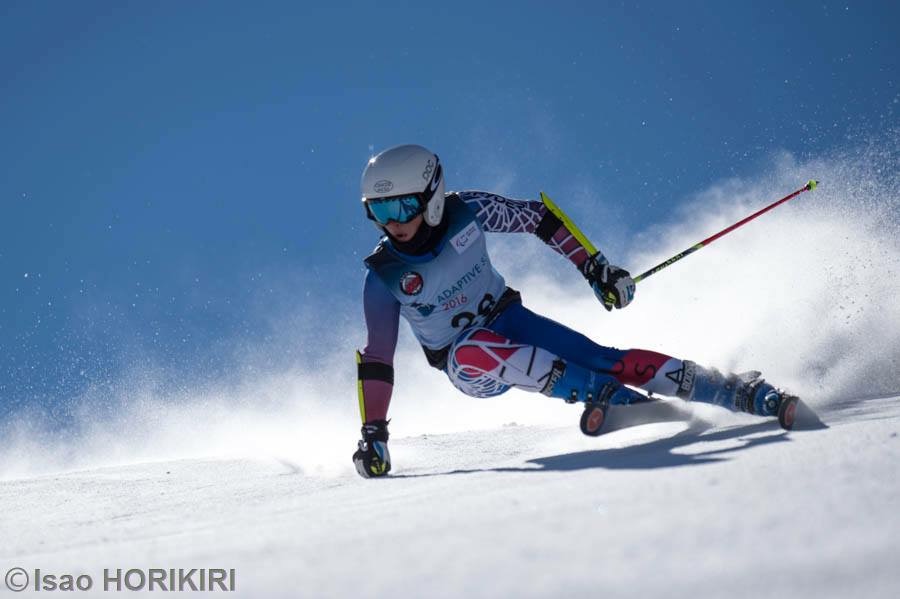
Another 55 or so days of training occurs in the pre season. This alternates each year between Coronet Peak or Mt Hutt in NZ and Portillo or Valle Nevado in Chile. Mt Hood is the base for June training and in fall it is Austria at Hintertuxer Glacier.
Competition is fierce throughout the season – the IPC World Cup circuit (this season in Slovenia, Italy, Switzerland, France, with finals in Aspen), US and European national championships, the World Championship every odd year, the NZ Winter Games when training in NZ and the Paralympics every 4 years. About 200 athletes from around the world compete at top level and US team members notch up around 50 to 55 races per annum. The Paralympics are on the same courses as able bodied racers.
This year in the IPC World Cup, the team won the overall women’s Nation’s Cup and came second to the Russian team in the men’s only 166 points behind, continuing a long history of top performances.
For the athletes, being a team member is a full time job. They receive a basic stipend based on rankings in the winter season. Many also have sponsors and undertake public speaking. The most well known athlete at present is Tyler Walker – 2014 IPC World Cup Overall Champion, twice nominated for an ESPY and competitor in the ESPN X Games Mono X, an event Kevin himself started and has won several times.
Training the best
The performance goal for the team and its as coa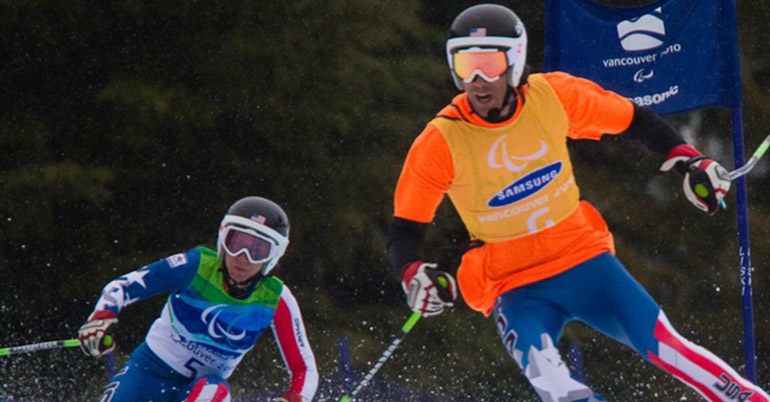 ches is to achieve the same standards as are achieved by able bodied skiers. For some things it’s easier – fro example, going fast by skiing in a straight line with 1 ski! All times are factored against the fastest times in the history of the sport by the type of disability to equalize each category.
ches is to achieve the same standards as are achieved by able bodied skiers. For some things it’s easier – fro example, going fast by skiing in a straight line with 1 ski! All times are factored against the fastest times in the history of the sport by the type of disability to equalize each category.
Sprongo helps enormously. The coaches use it daily to track progress against goals and the athletes can compare their own performances, with other adaptive skiers and able bodied racers. The cloud service is especially useful when the skiers are training apart. To paraphrase Kevin, I “highly recommend Sprongo to other Paralympic and able bodied sports”.
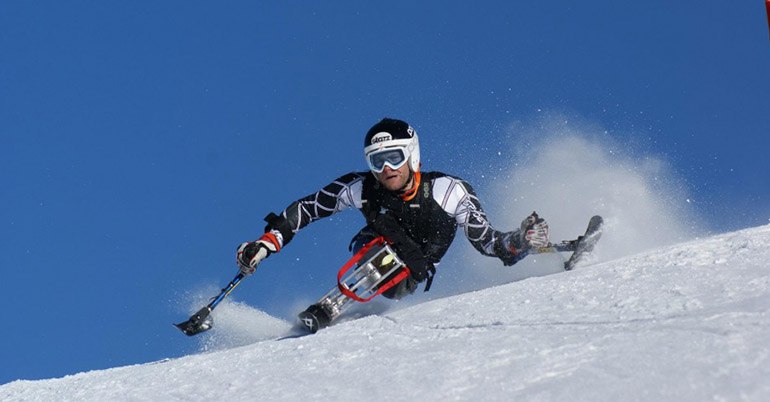
To find out more about adaptive sports, go to http://blog.adaptivespirit.com/.


